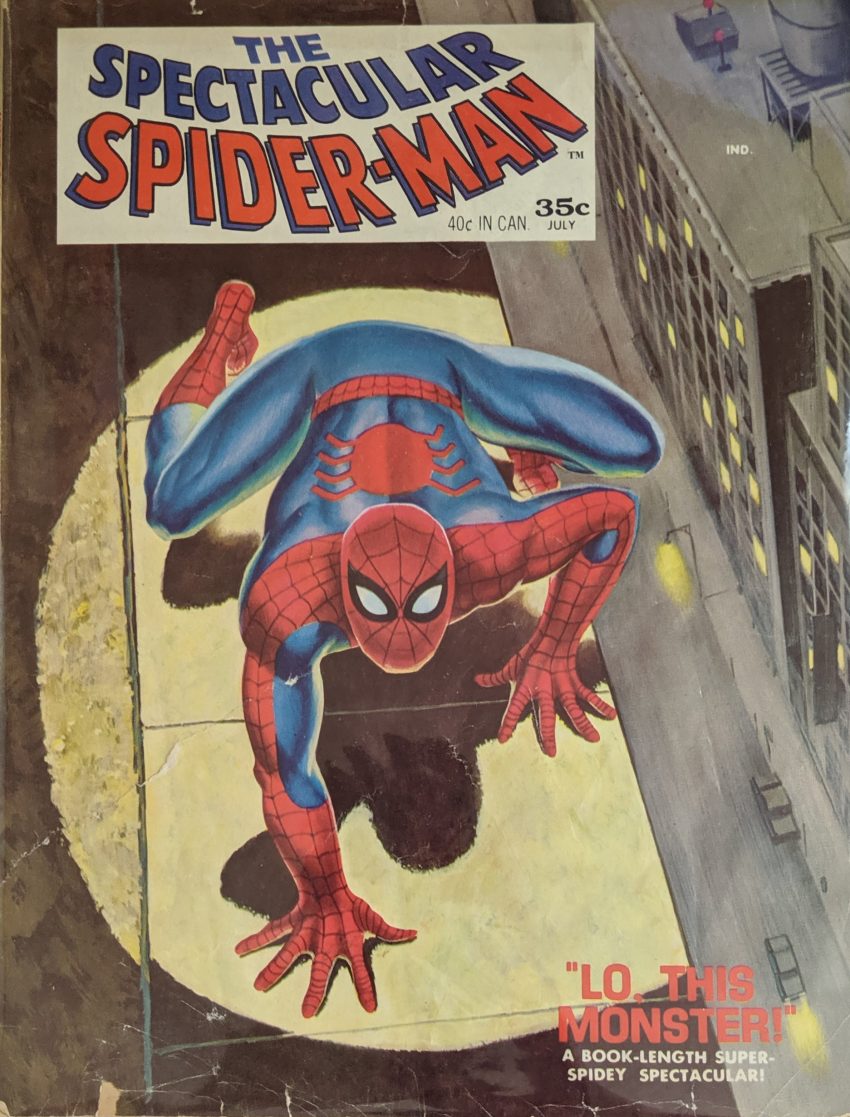I have no idea what the history of this magazine is. In the 70s, Marvel would launch a whole line of very successful black & white magazines starring horror characters, Conan, Master of Kung Fu, and other non-superhero fare. But this is 1968, and all of a sudden, Stan’s decided to make a black & white Spider-Man magazine. Slightly bigger than a normal comic…

…and much longer, it would certainly look different on the shelves. But was there a market for it? Maybe not, since they only made 2, and the 2nd one was in color. At any rate, here’s the thing taking John Romita off full pencils on ASM right now. And, as discussed way back in block 2, this was expanded and revised and turned into ASM 116-118 a few years later, so we’ve sort of seen it before. So rather than the usual sort of post, I thought I’d just take the chance to showcase some of the differences between this and the 3 issues of ASM. Look at this unusually detailed credits page:
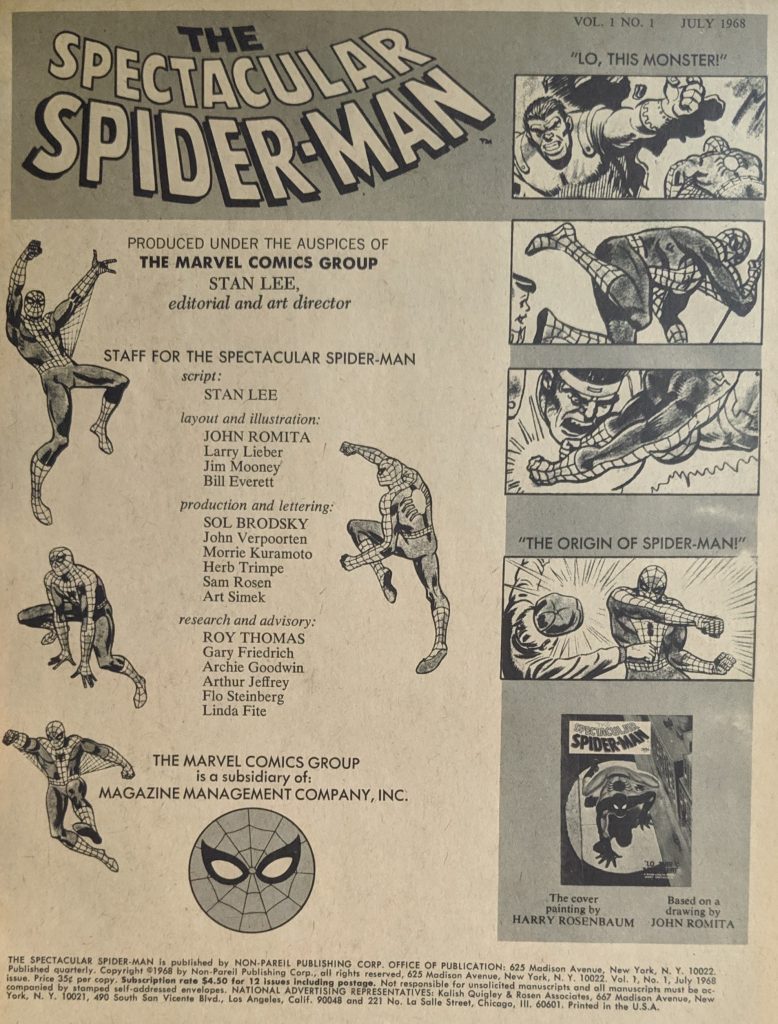
Stan is basically listing everyone who works in the Marvel offices in the last 2 sections. These credits are followed by more traditional comics credits on the next page:
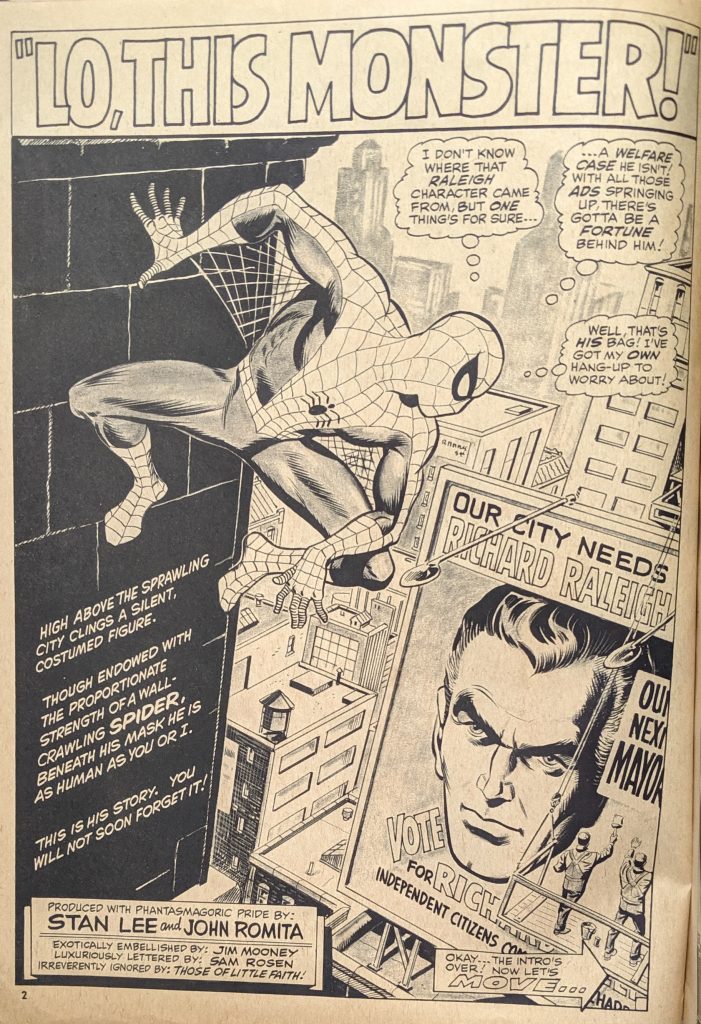
The credits to Larry Leiber & Bill Everett are for a retelling of Spideys origin following the main story. The Spidey eyes in this look unmistakably Romita, while the ones in ASM as rendered by Don Heck do not. It seems like Jazzy Johnny did much more detailed pencils here than in ASM. Or, maybe that’s just Mooney being a good mimic. Who knows? Not me.

As with the version that unfolded in ASM 116, 117 & 118, this story concerns a Richard Raleigh running for mayor, and secretly funding the creation of a smear campaign against him and a big monster to sell it as part of his plan. Unlike in ASM, he has no supervillain identity, we know it’s him behind the attacks on himself almost from the beginning, and the big dude isn’t called “The Smasher” here, he’s the more awkward “Man Monster.” Here’s him ripping through Raleigh’s billboard…
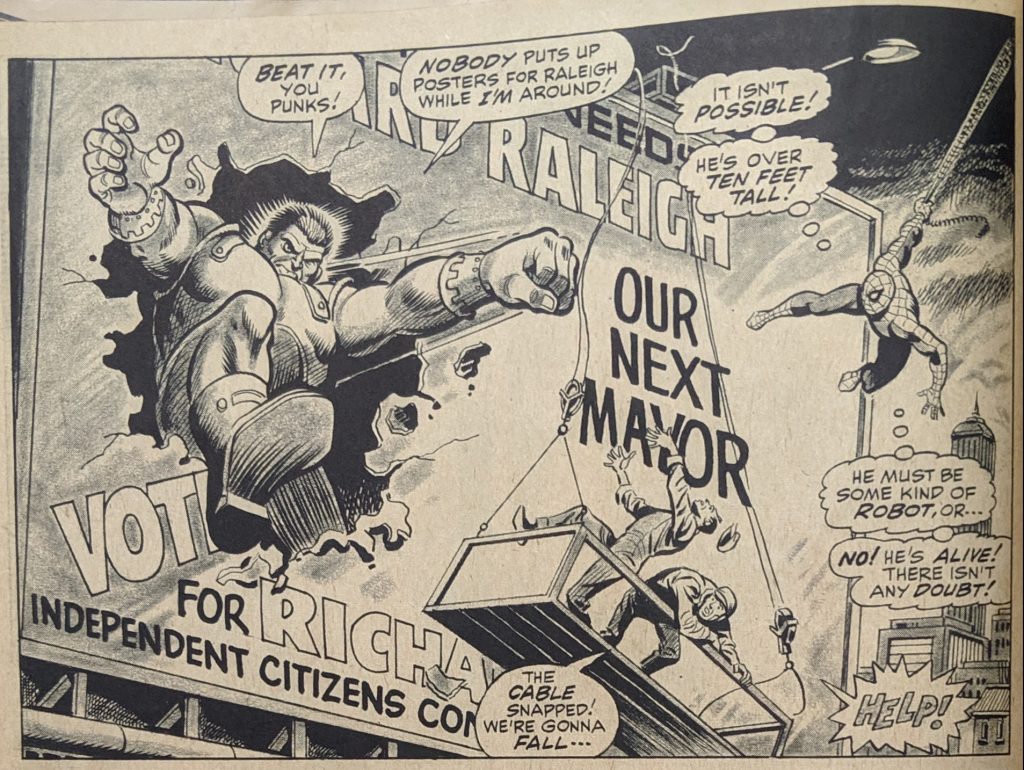
Vs. how it looked in ASM 116:
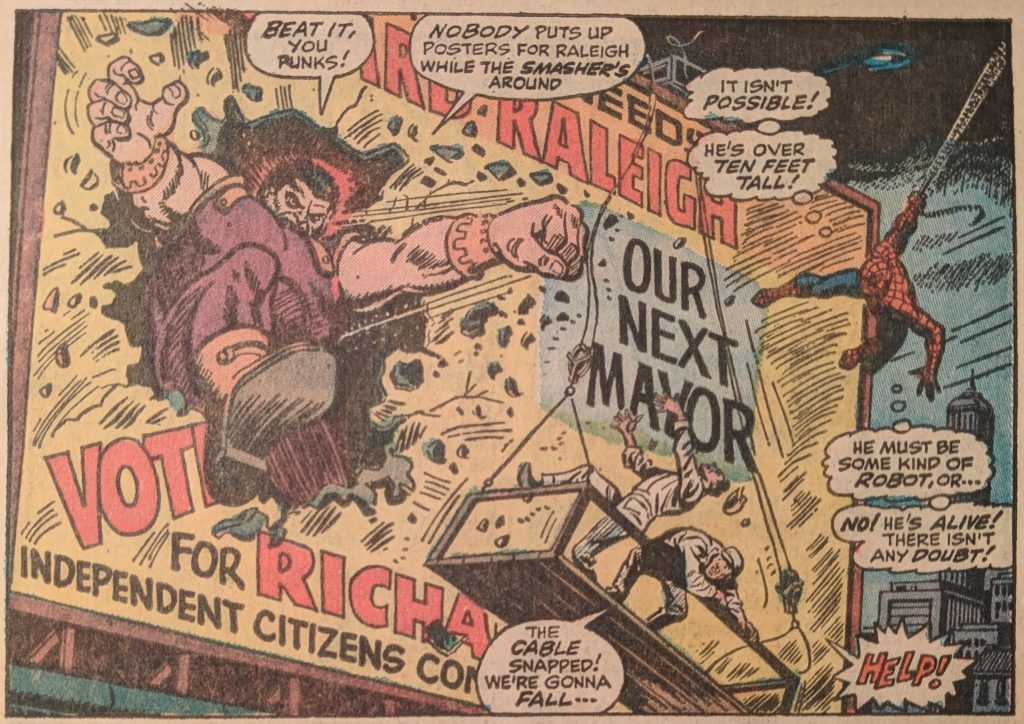
Given the production techniques of the day, I’m actually really curious how the ink wash isn’t visible in the ASM issues. I would assume it was done right on the board. The story proceeds more or less as it did in the ASM issues, with obvious and not-so-obvious differences. They had to make edits for on-going plots at that time, and for Peter’s far more serious situation with Gwen, as seen here…


Even Betty’s hairstyle got an update. Another important update is Raleigh totally seems like a bad guy pretty much at all times in the original, even when he’s pretending to be a normal dude, which they wisely changed in the later version. Look how deranged he looks on TV in the original:
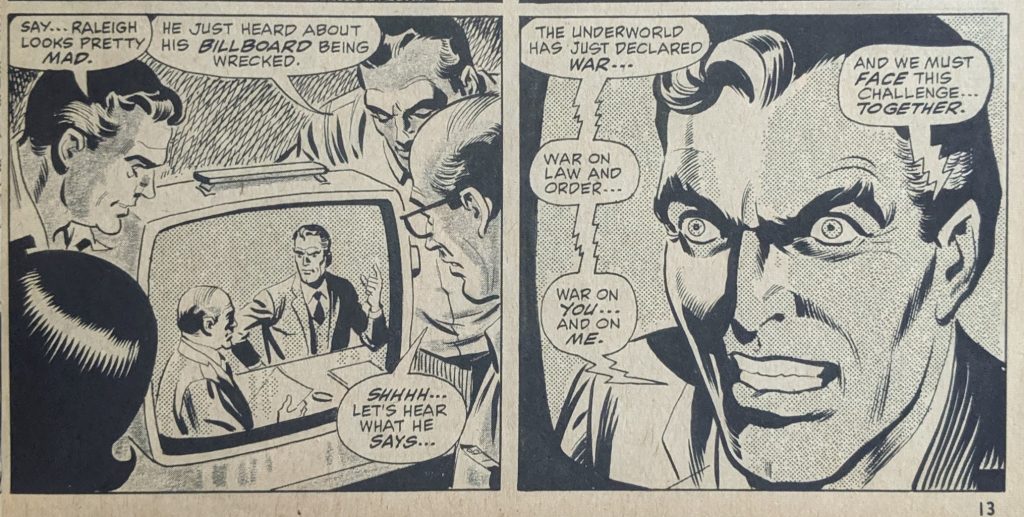
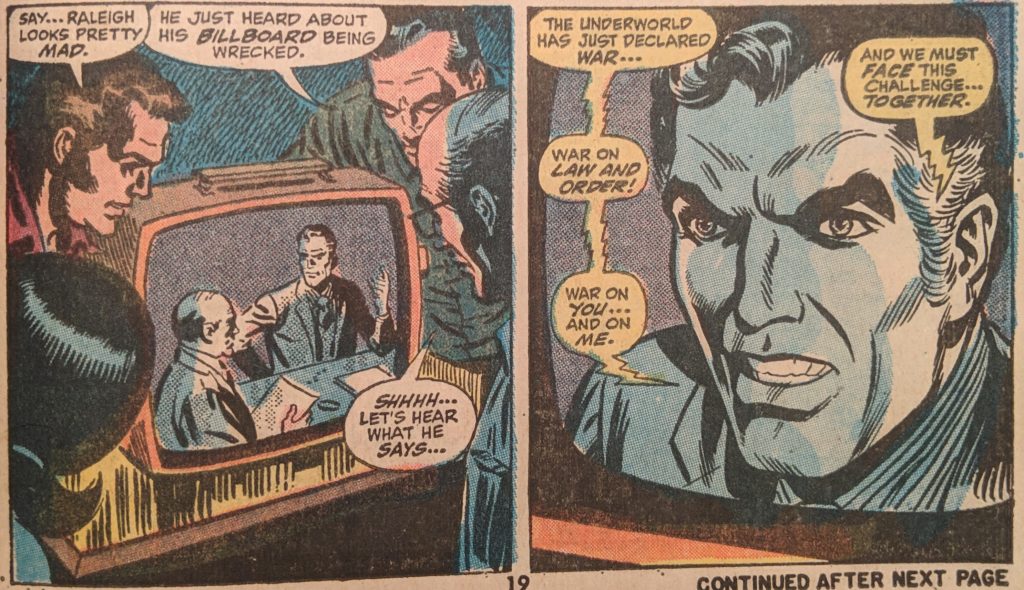
And look at the difference when he gets off the air…
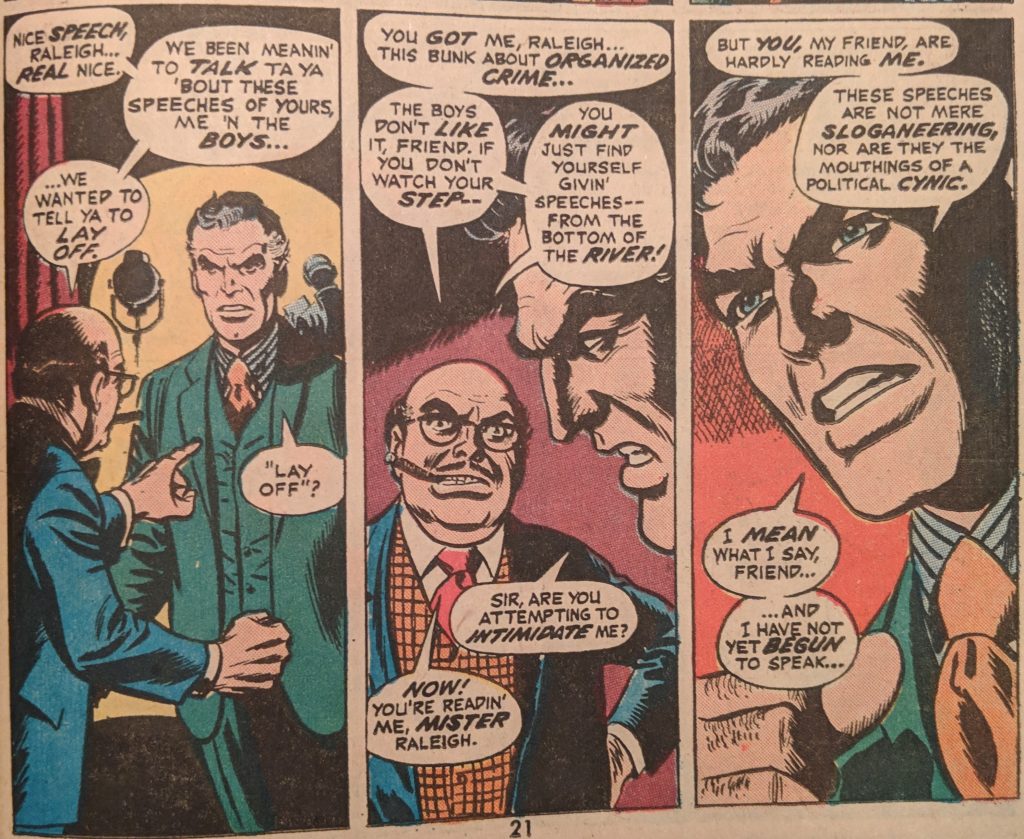
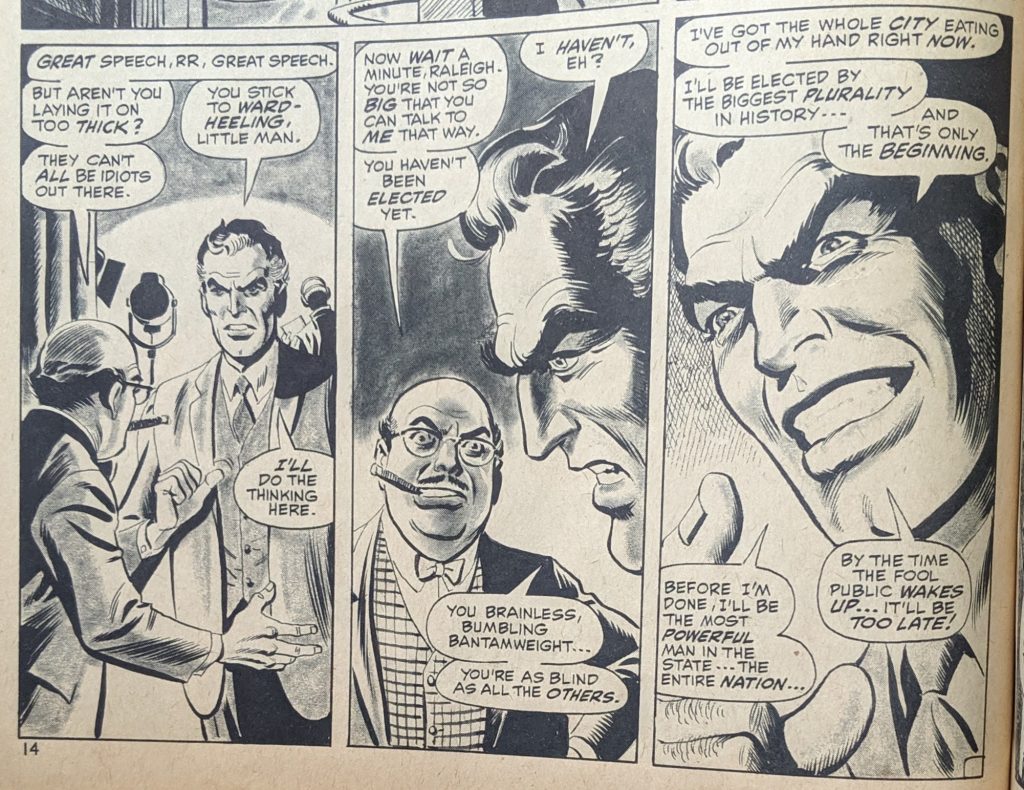
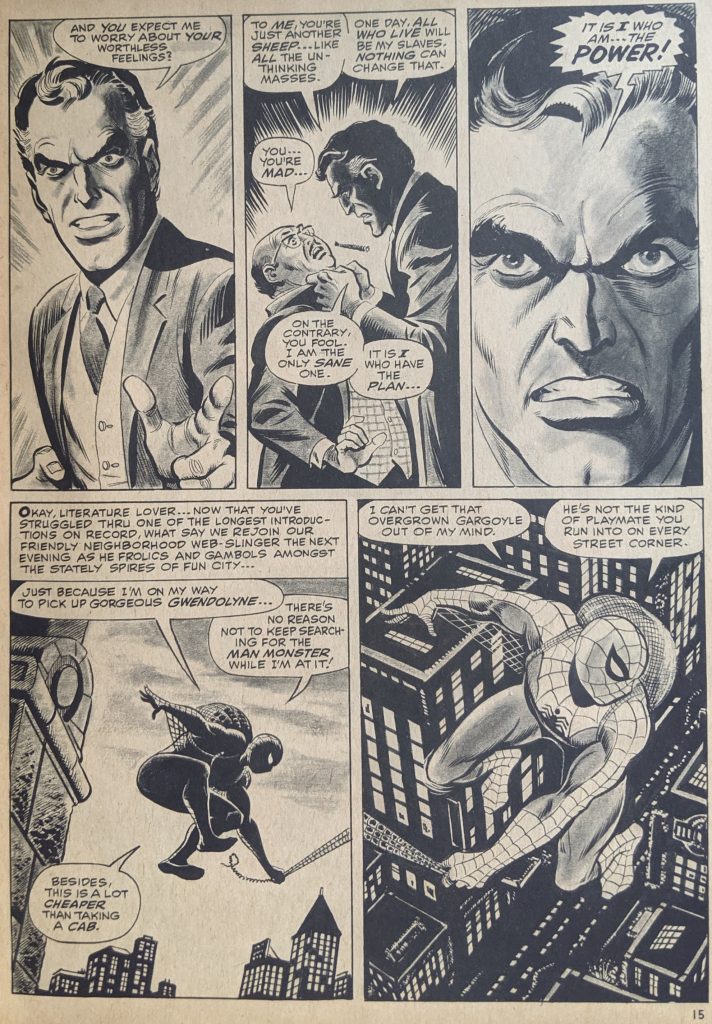
Just straight up evil, and the deal with the bald guy is totally different now. Spidey goes to pick up Gwen to take her to the Raleigh rally, but in ASM, he was worried she and Flash had a thing going, and here he is not, so he’s swinging around looking for The Man Monster on his way, and when he gets there, things play out very differently.
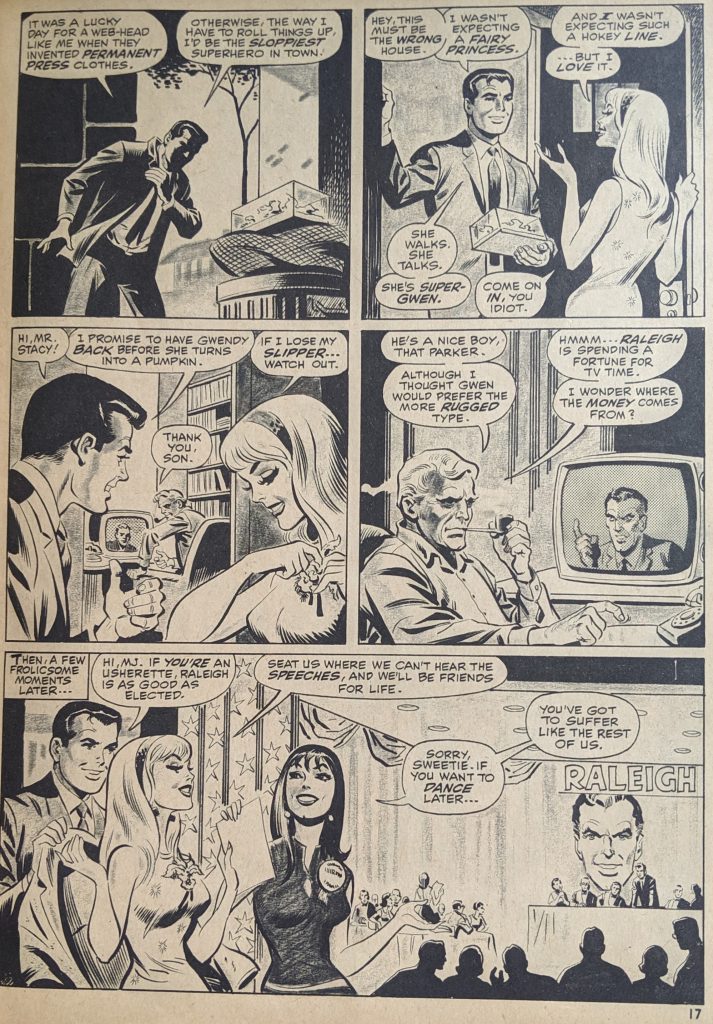
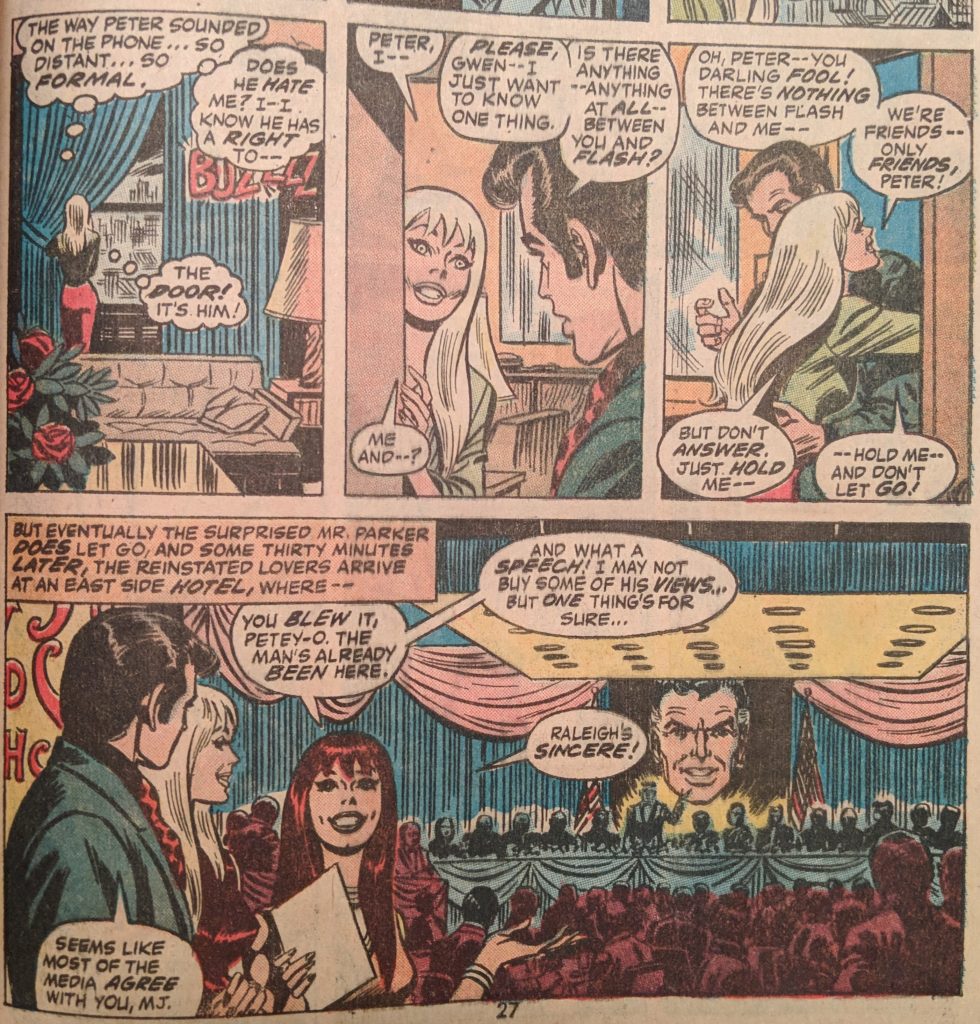
Jim Mooney has an inking credit on both, and yet his trademark accidental crazy eyes only appear in the later version on Gwen up there. Then comes the first really huge change. At the rally, the ceiling is going to collapse, and Peter has to figure out how to stop it.
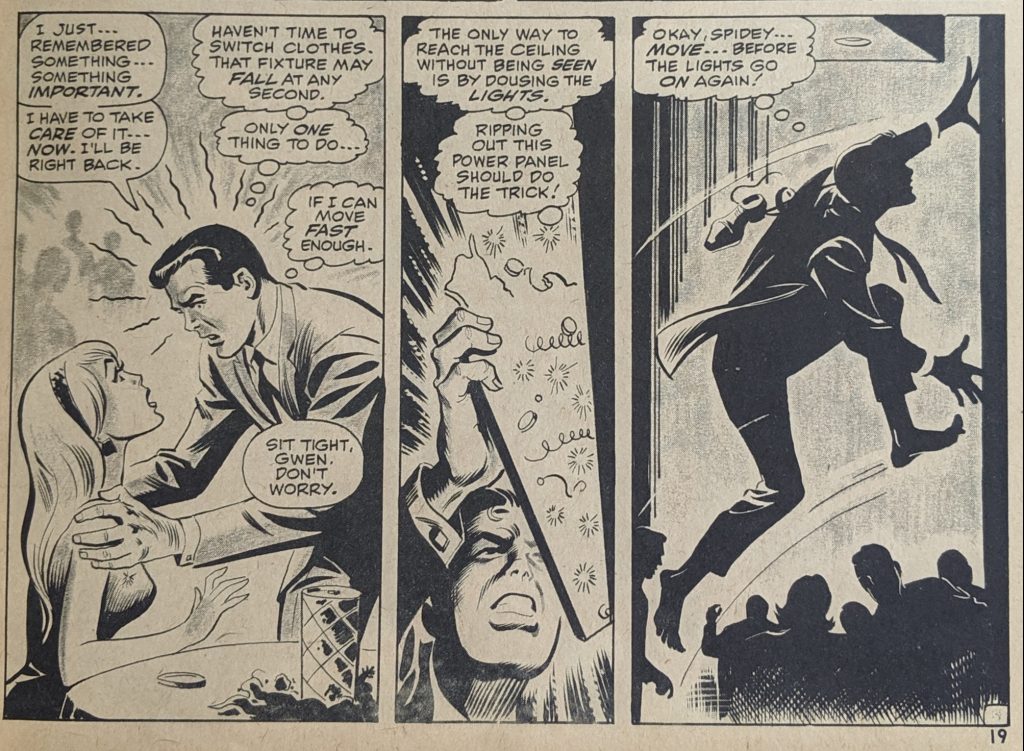

And he does.
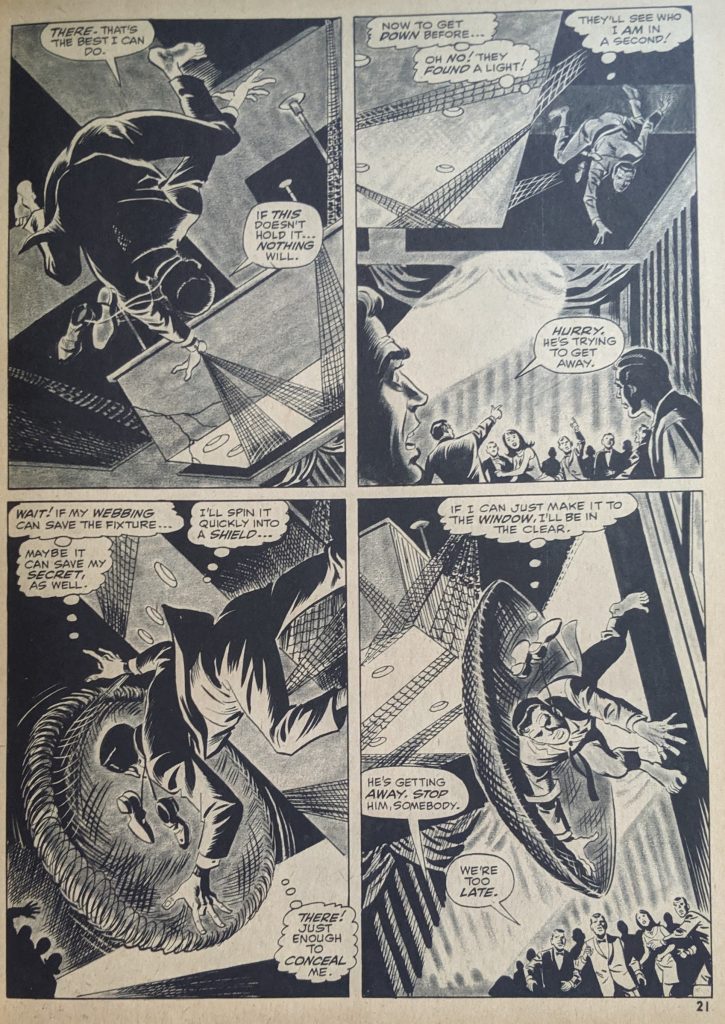
As opposed to the ASM version, where he doesn’t think he can do it as a cliffhanger in ASM 116, and then fails in ASM 117.
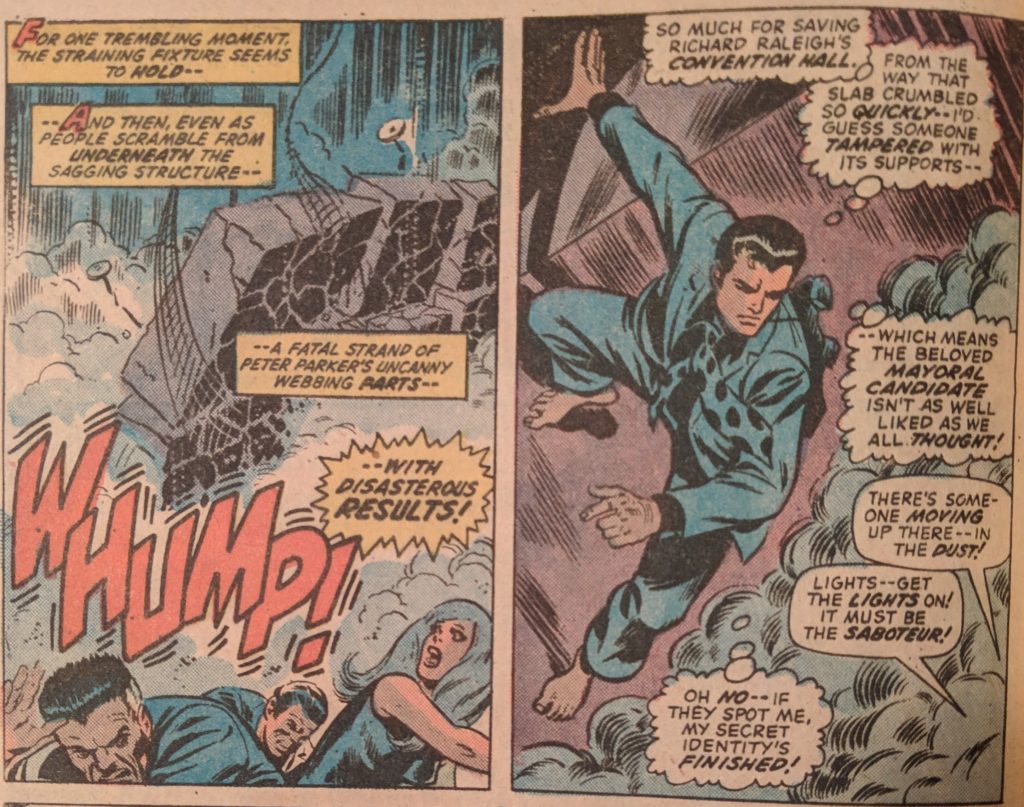
You know, really looking at this, I’m not sure there’s a single panel that hasn’t been retouched or maybe even redrawn completely. Look at all the major and minor changes just in these 4 panels.
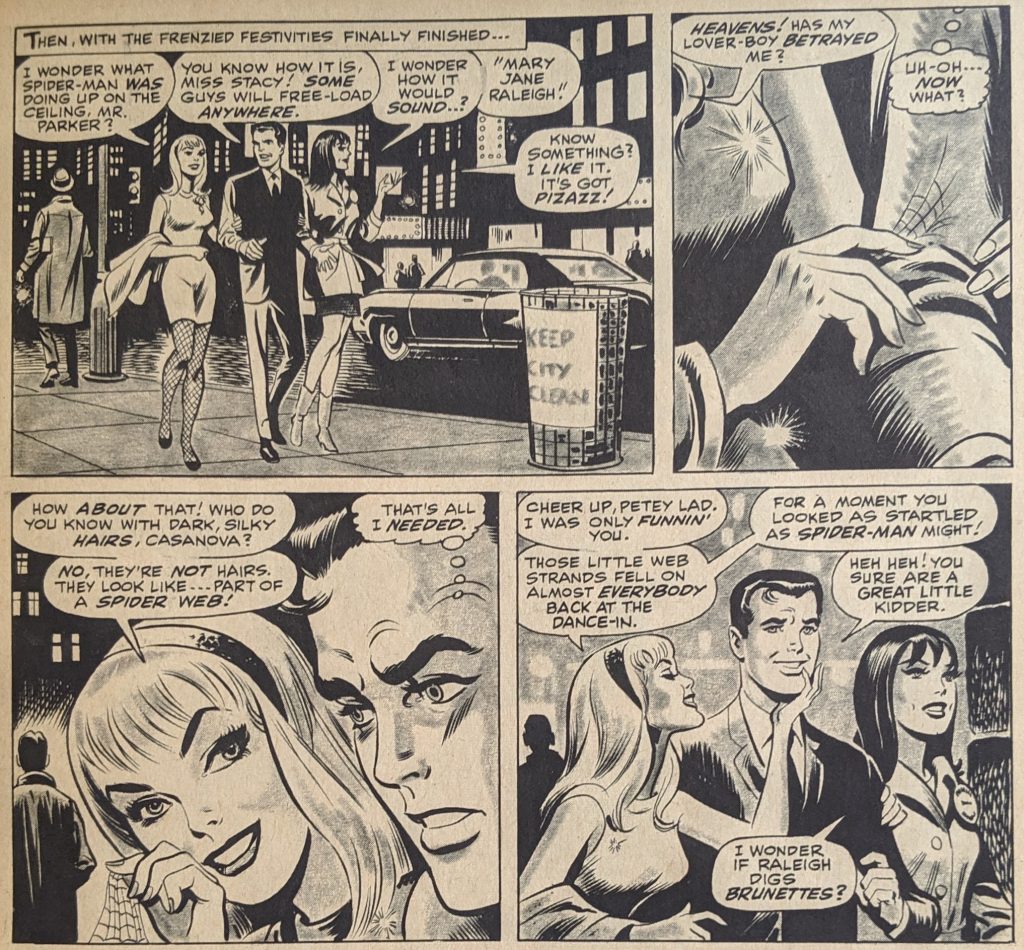
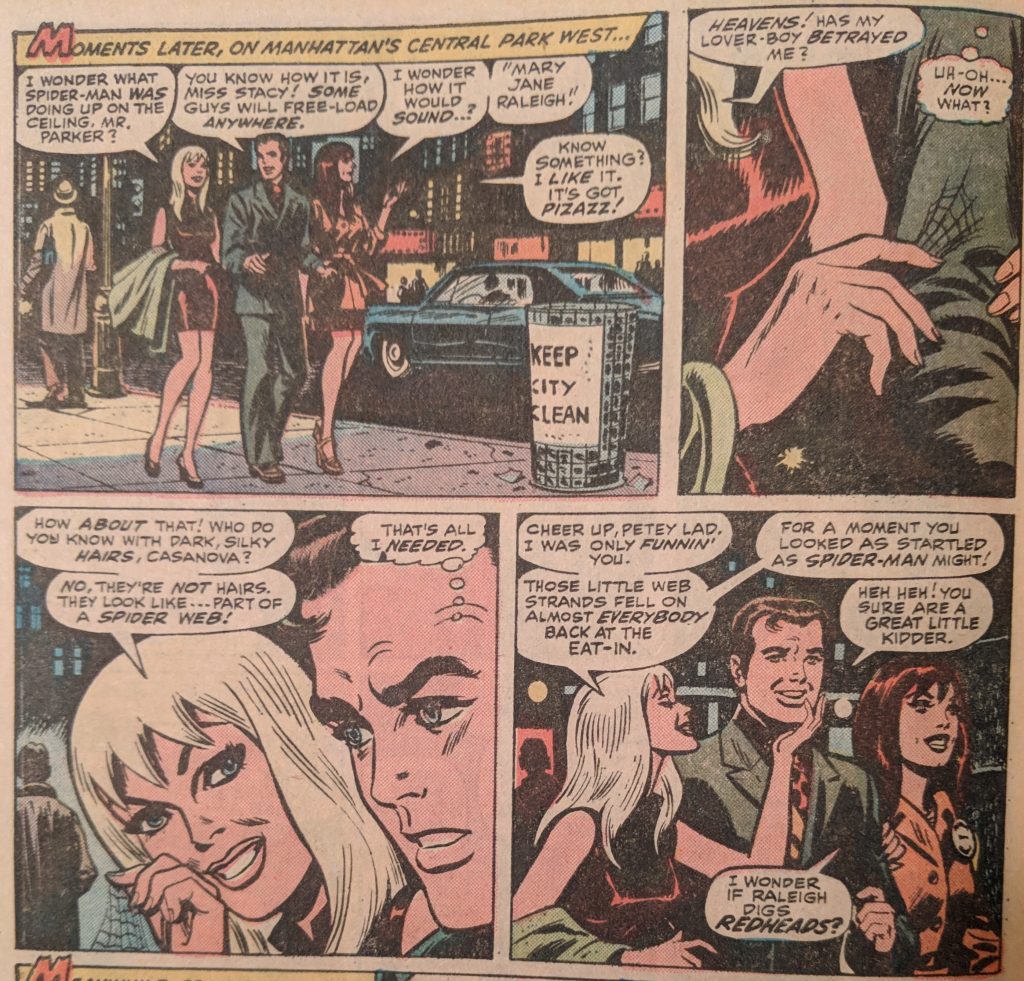
Pretty drastic actually. Then we come to the part where “The Disruptor” was introduced in ASM 117, but here, it’s just plain ol’ Richard Raleigh, raving lunatic.
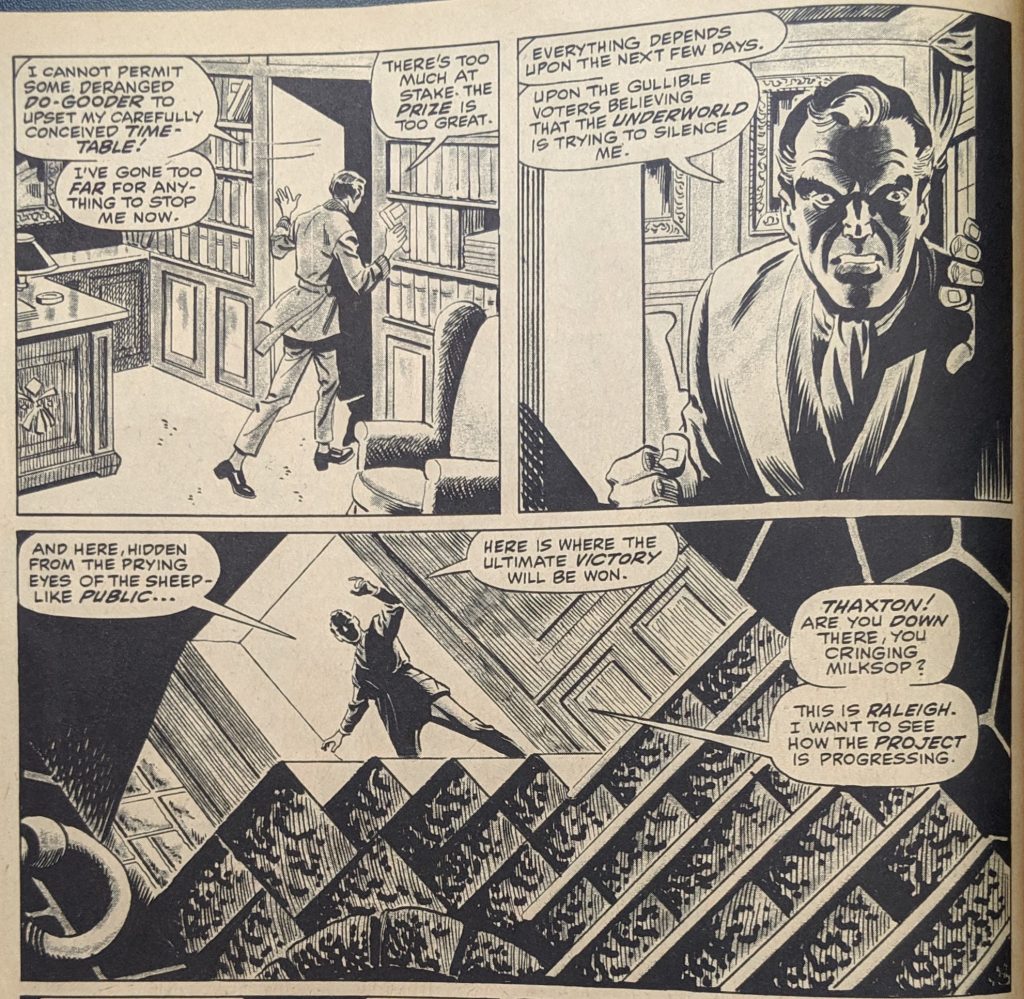
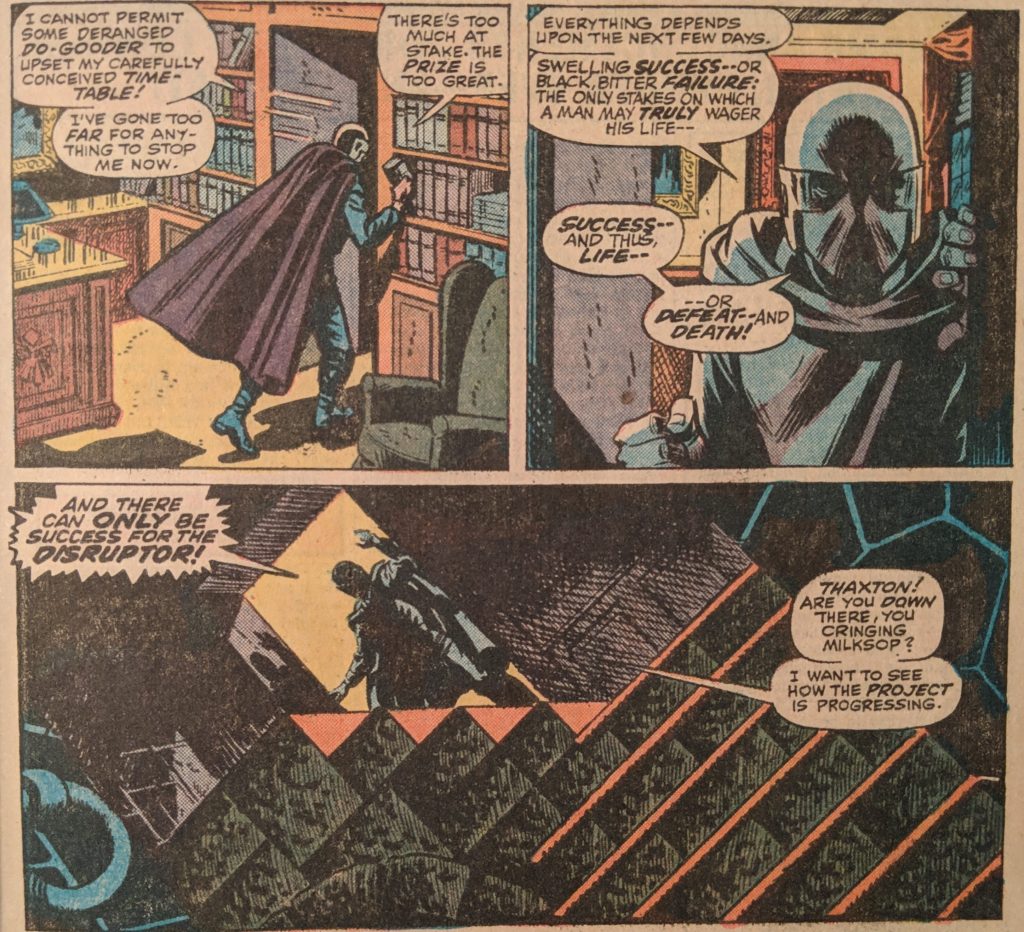
The scene barely changes, but Raleigh’s identity is hidden. another wise change, I’d say. Things progress to the scene at the club JJJ and others are members of, but who he’s talking to has changed, and in a real sign of the behind the scenes work on this, panels that appeared on 2 separate pages are now on one.
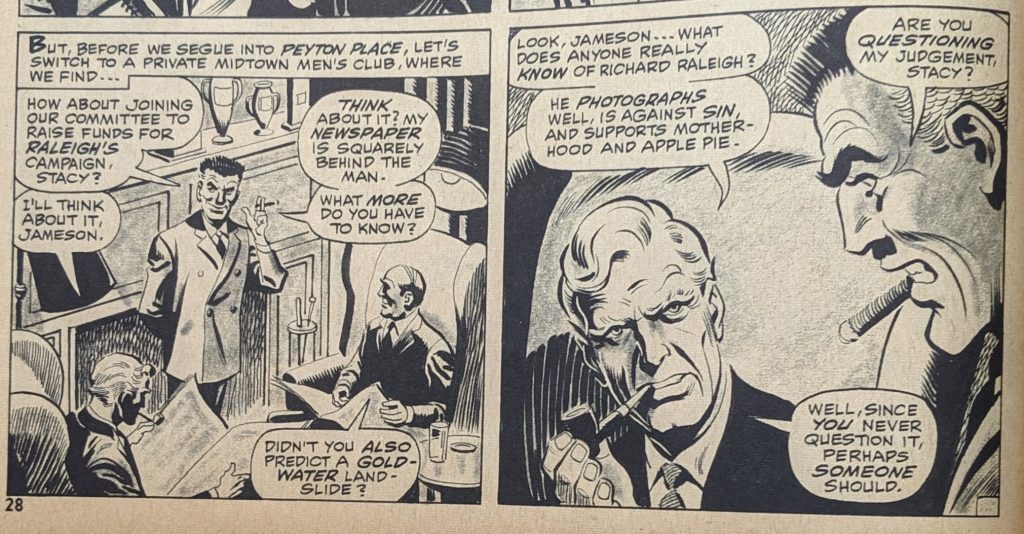
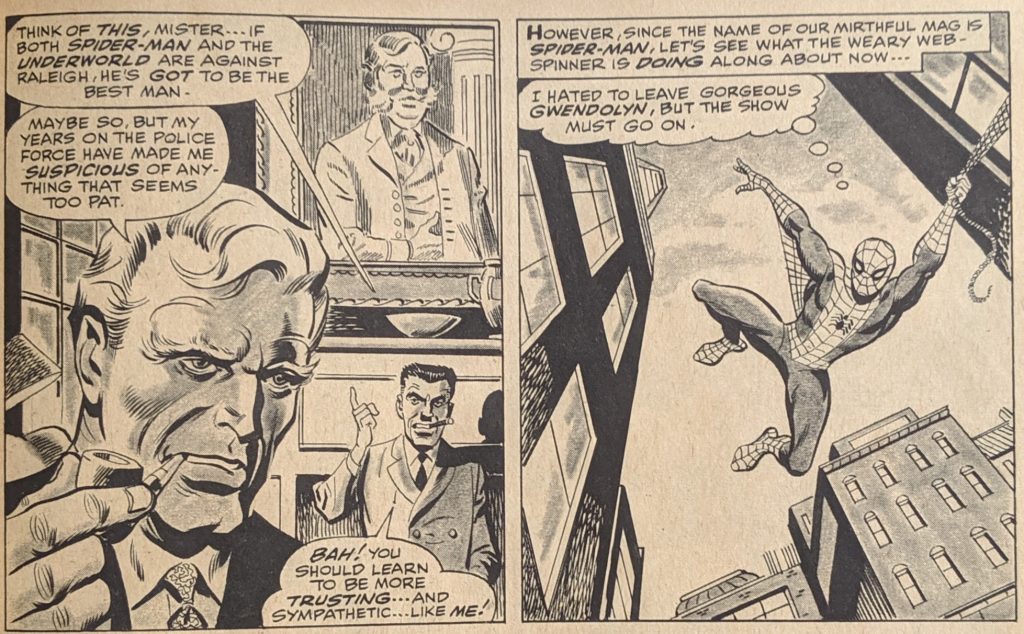
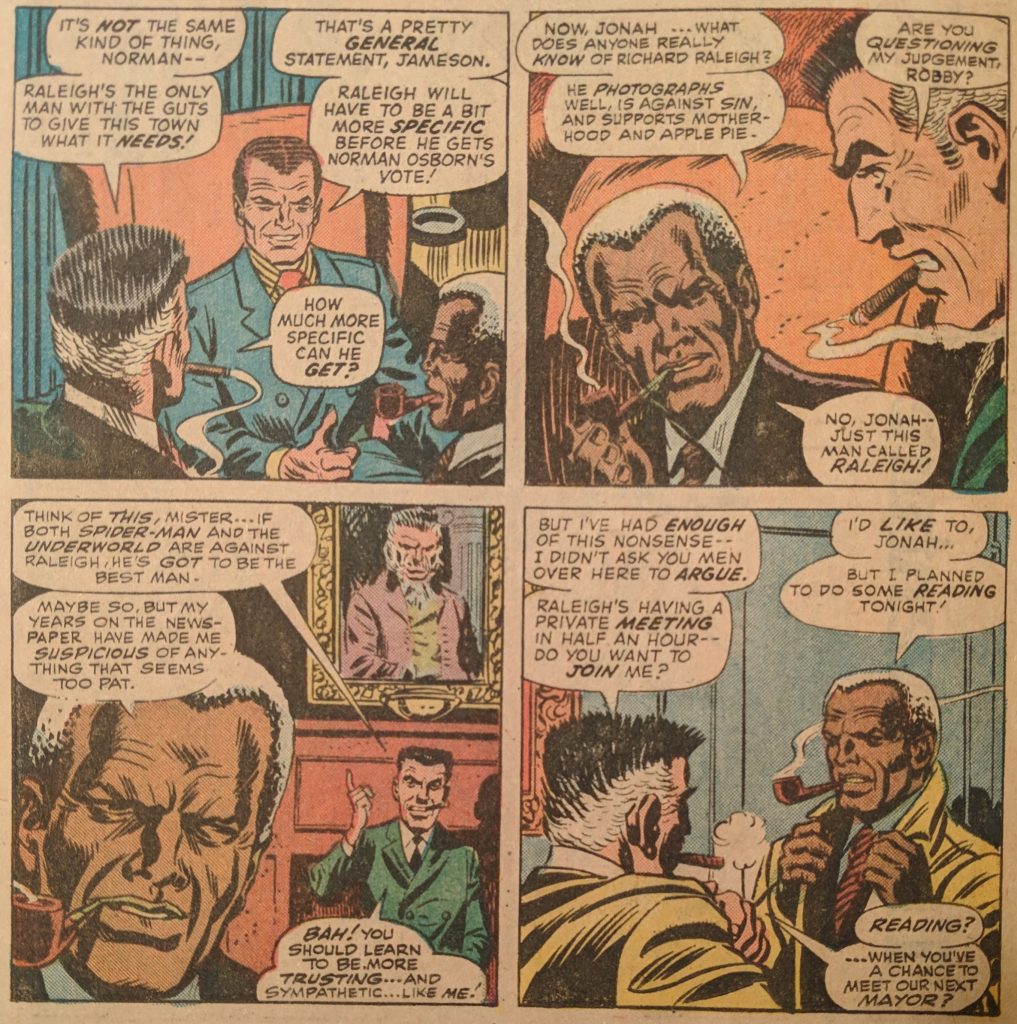
Then even more drastic changes are made, as in this, Peter goes to see Aunt May & Aunt Anna, but in the later one, Aunt May’s living at Doc Ock’s house. This one features another scene with George Stacy while the later one shows “The Disruptor” making his attack on the voter registration rally. And when the remake gets back to the original material, a panel that was the last one on a page is suddenly the first one on the next page.
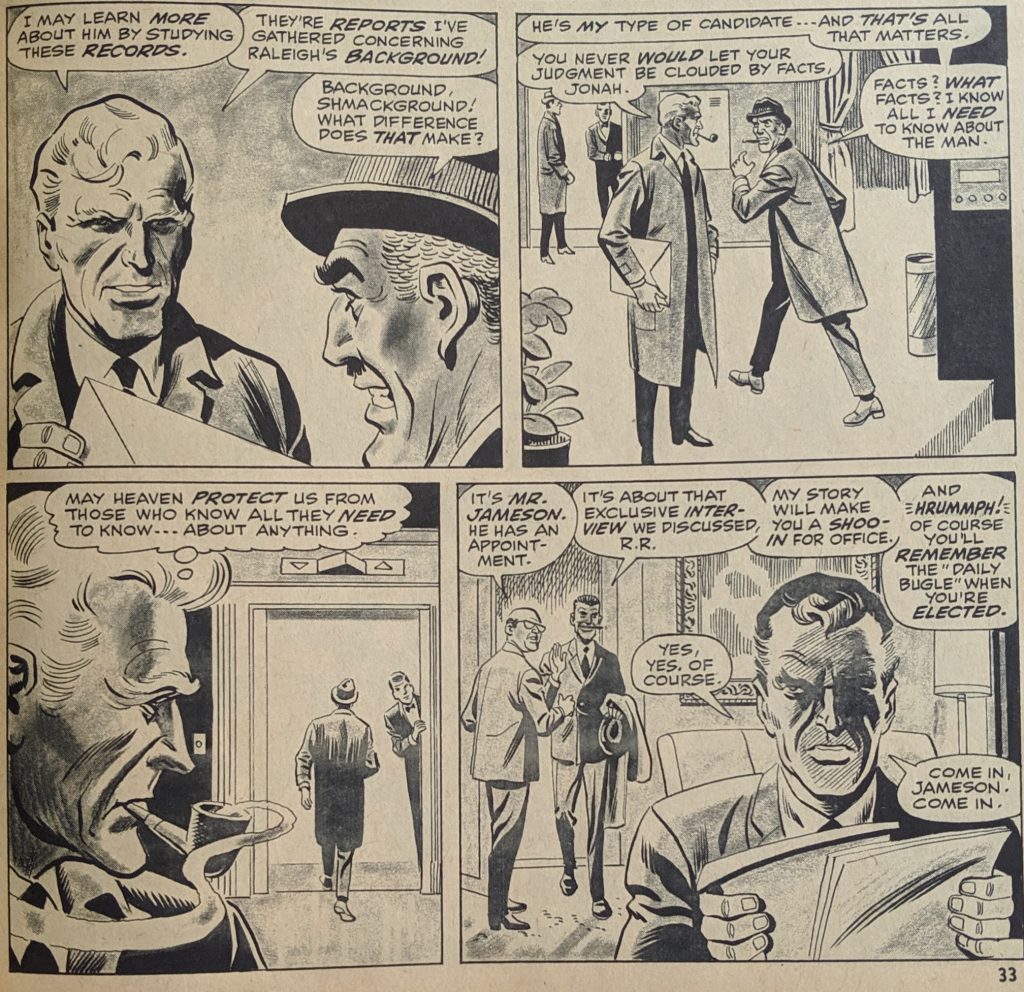

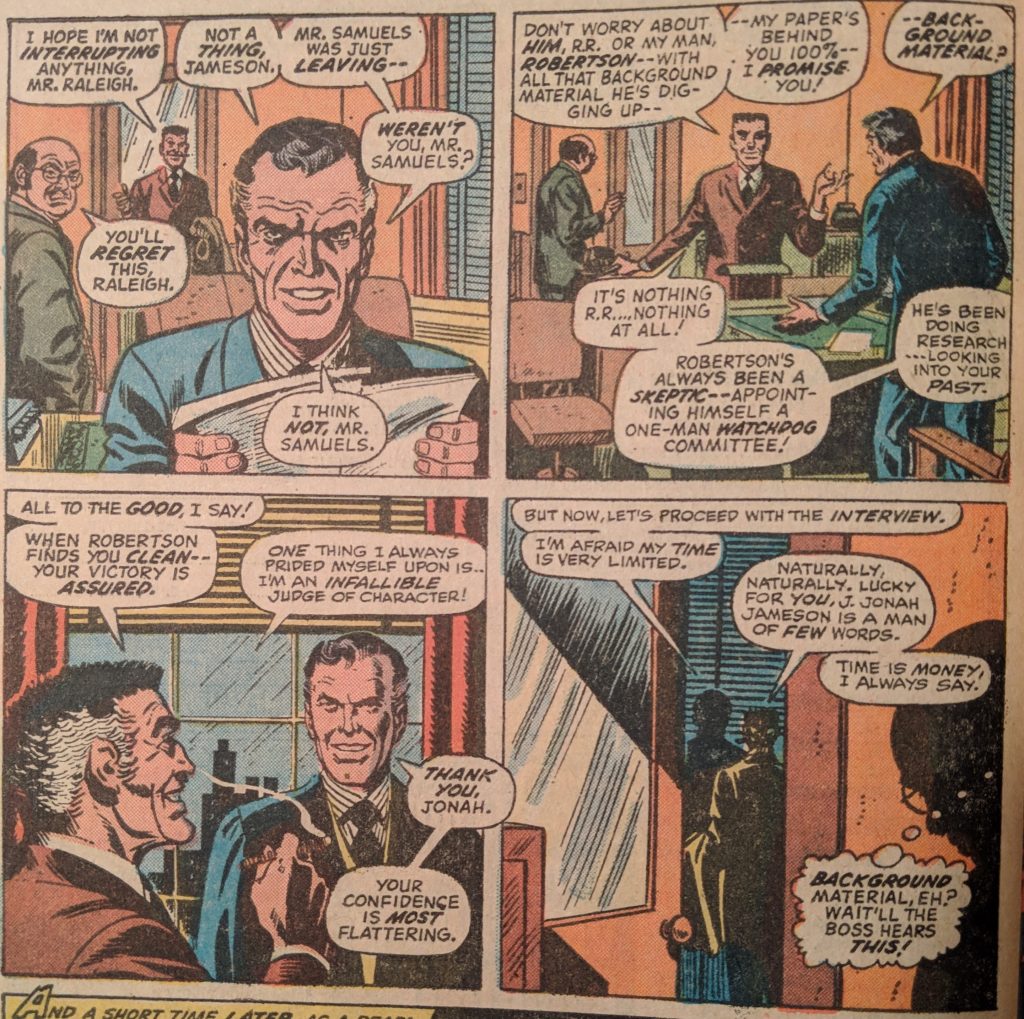
Raleigh/The Disruptor goes to reactivate his Man Monster/The Smasher, and now we’re into what became ASM 118, which required some heavy edits. In this version, The Man Monster is sent to George Stacy’s house to silence him, but that obviously couldn’t happen in the latter version, so it was replaced by The Smasher being sent to get Joe Robertson at The Daily Bugle. And yet, when he gets there, the panels are pretty much the same.
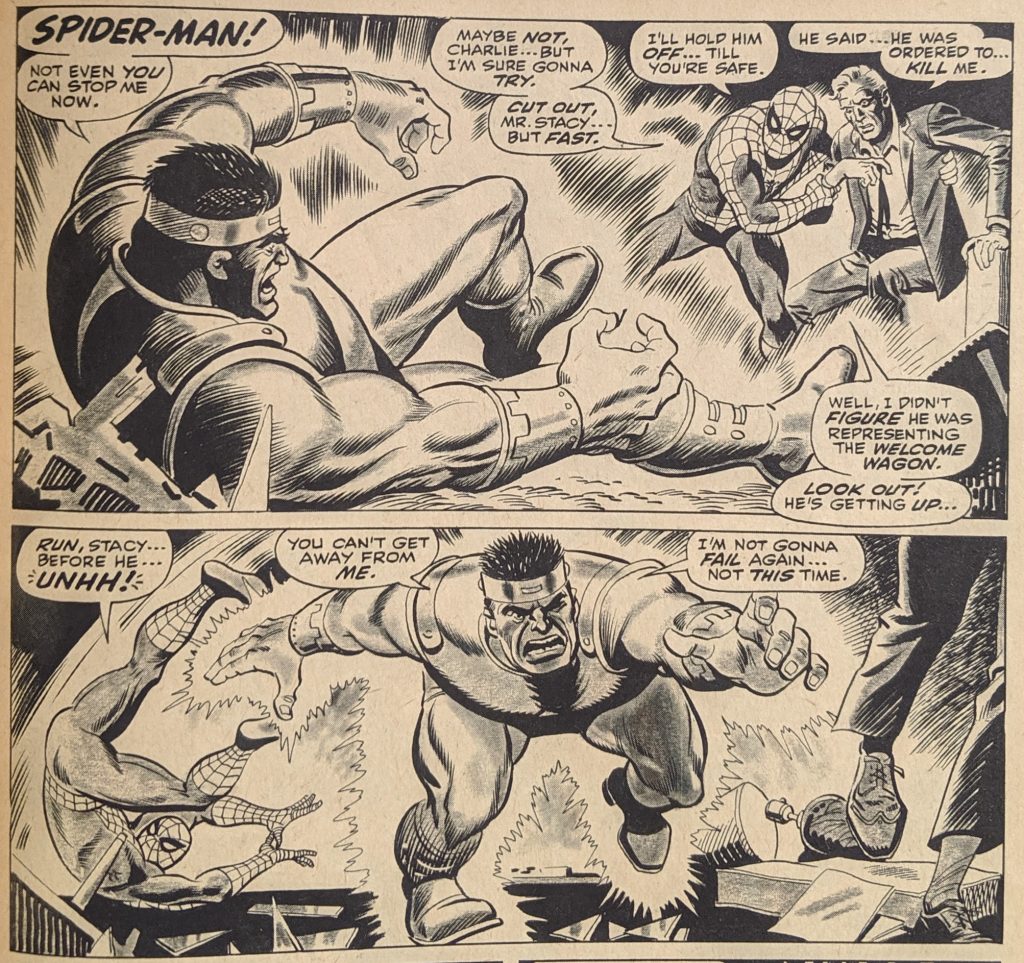
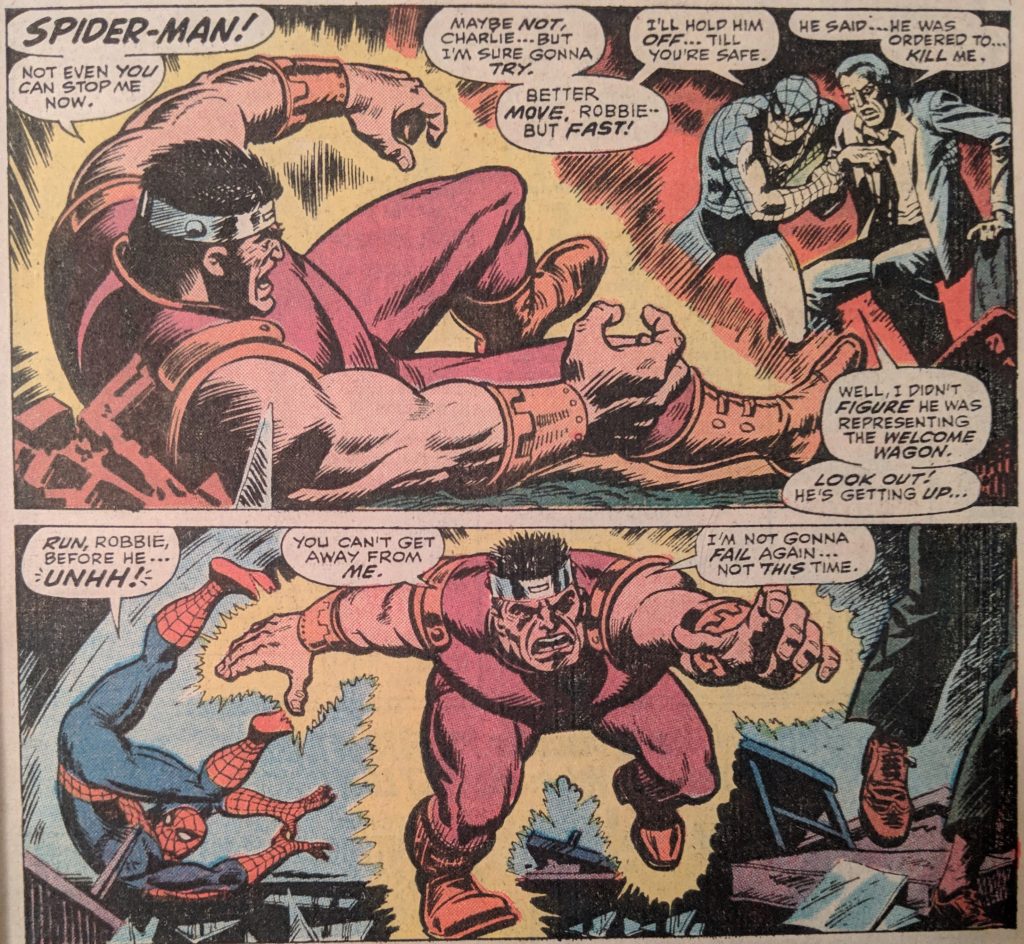
In both versions, Spidey makes his foe angry enough to give up on chasing George/Robbie and chase him instead, but in this version, he doesn’t switch to Peter and get in a car with the gang only to have it menaced by The Smasher like a doofus. Instead, we cut away to a tearful reunion between Gwen & George while Spidey leads The Man Monster on a chase through the city. But when he sees this…
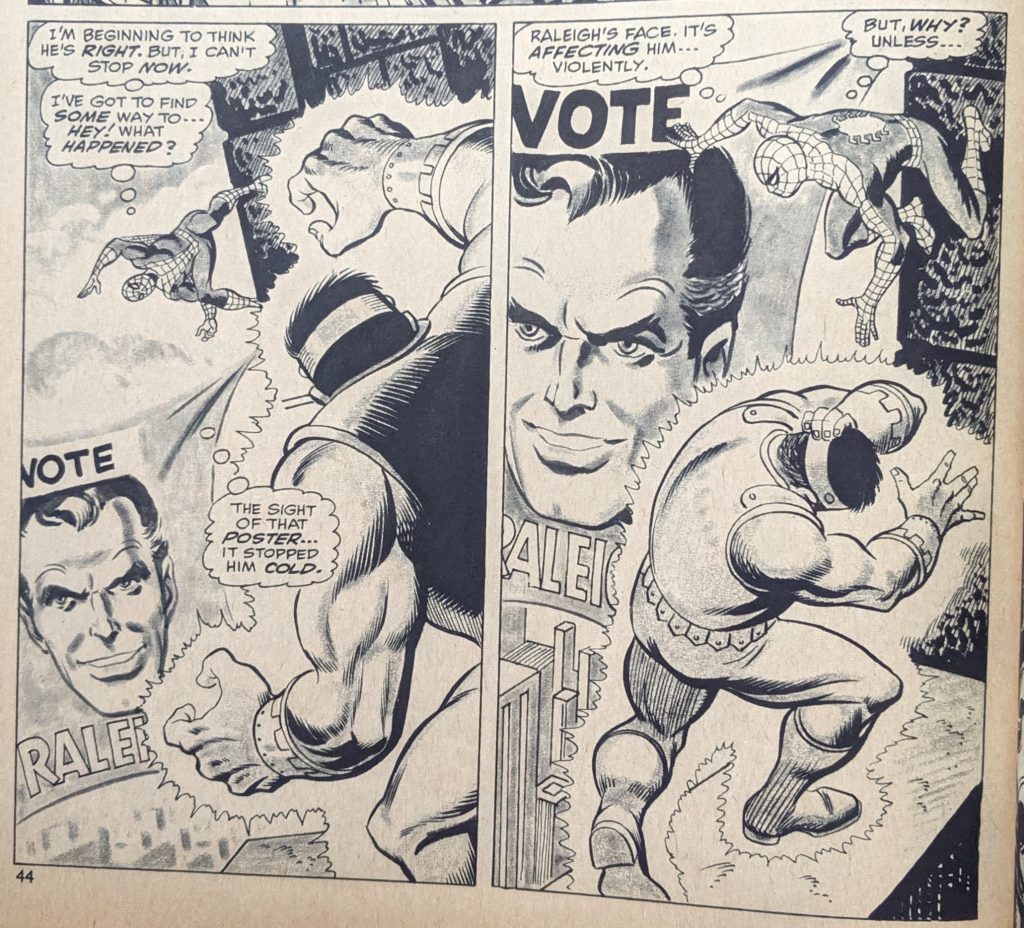
…he figures it out, and heads right to Raleigh’s house. Which is where the remake finally clicks back into this material, with obvious edits.
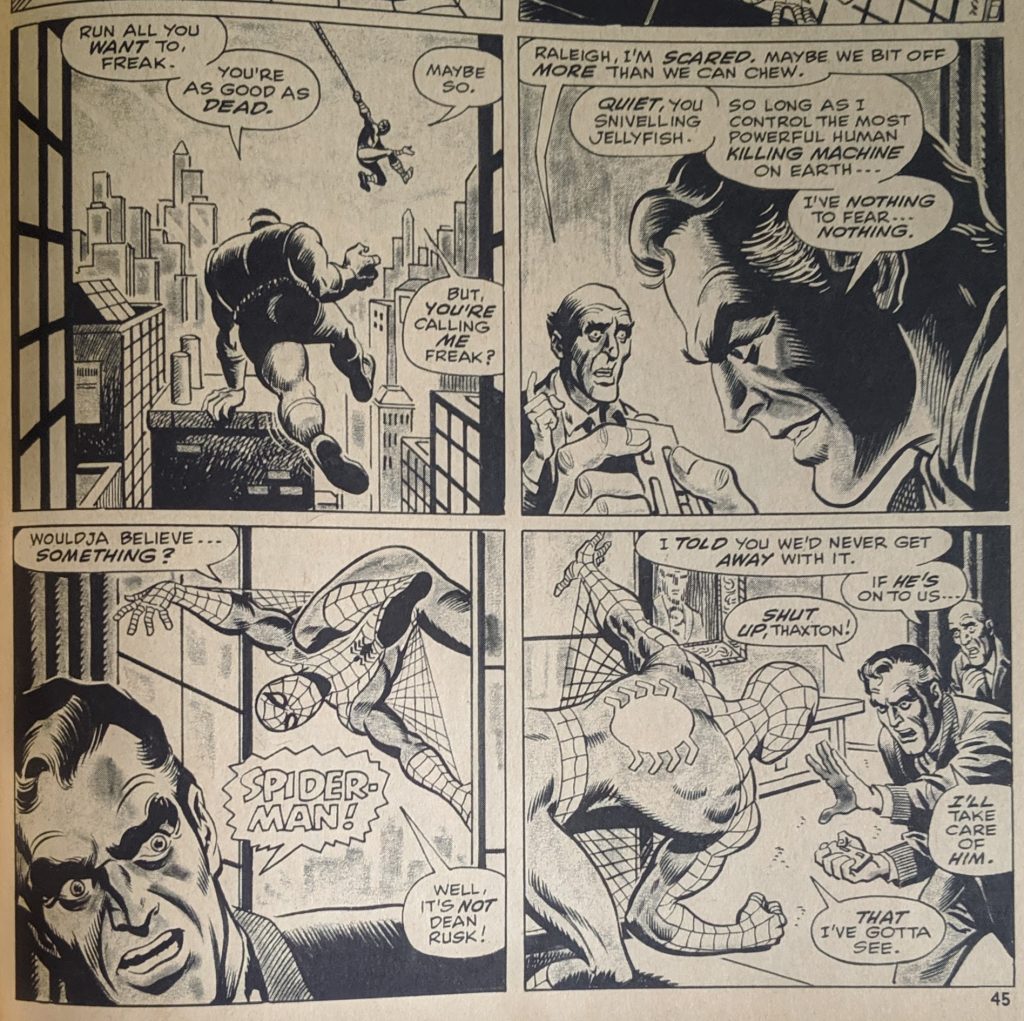
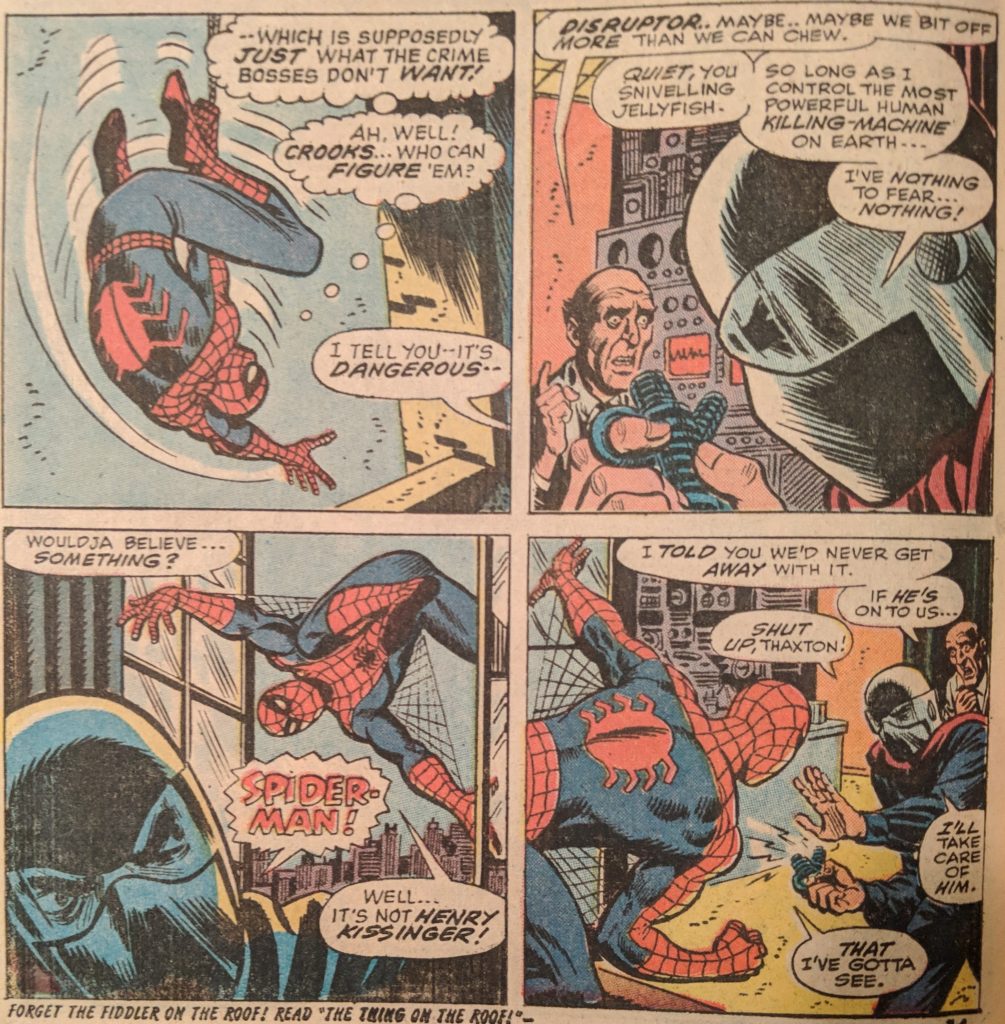
Very cool new Spidey in the newer version. So, you know, big fight, in both versions we get to Raleigh’s inevitable downfall…

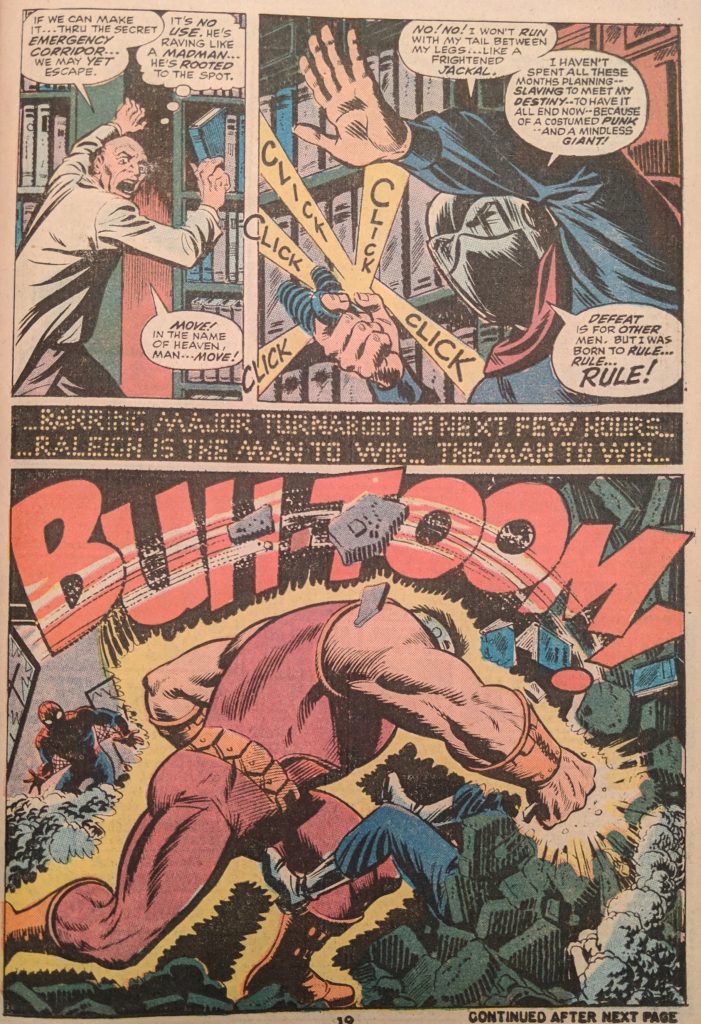
With some serious alterations…

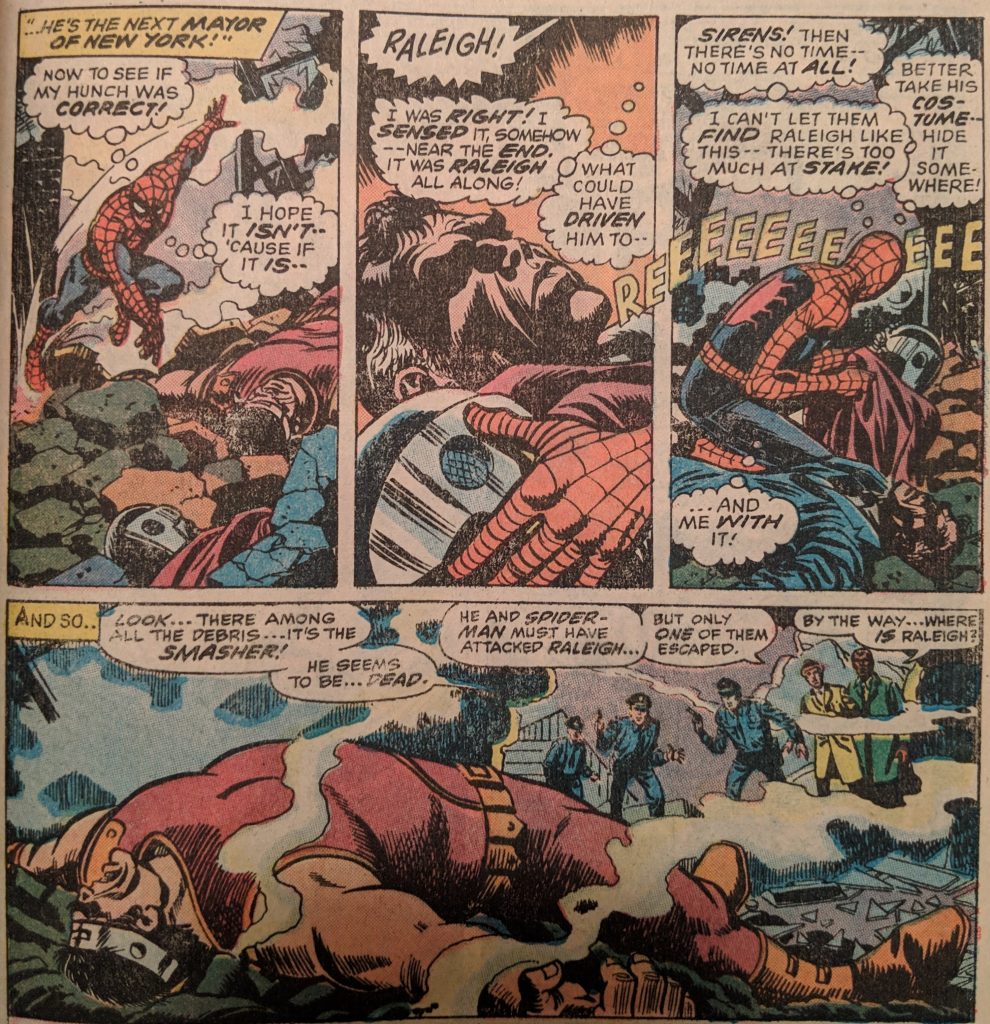
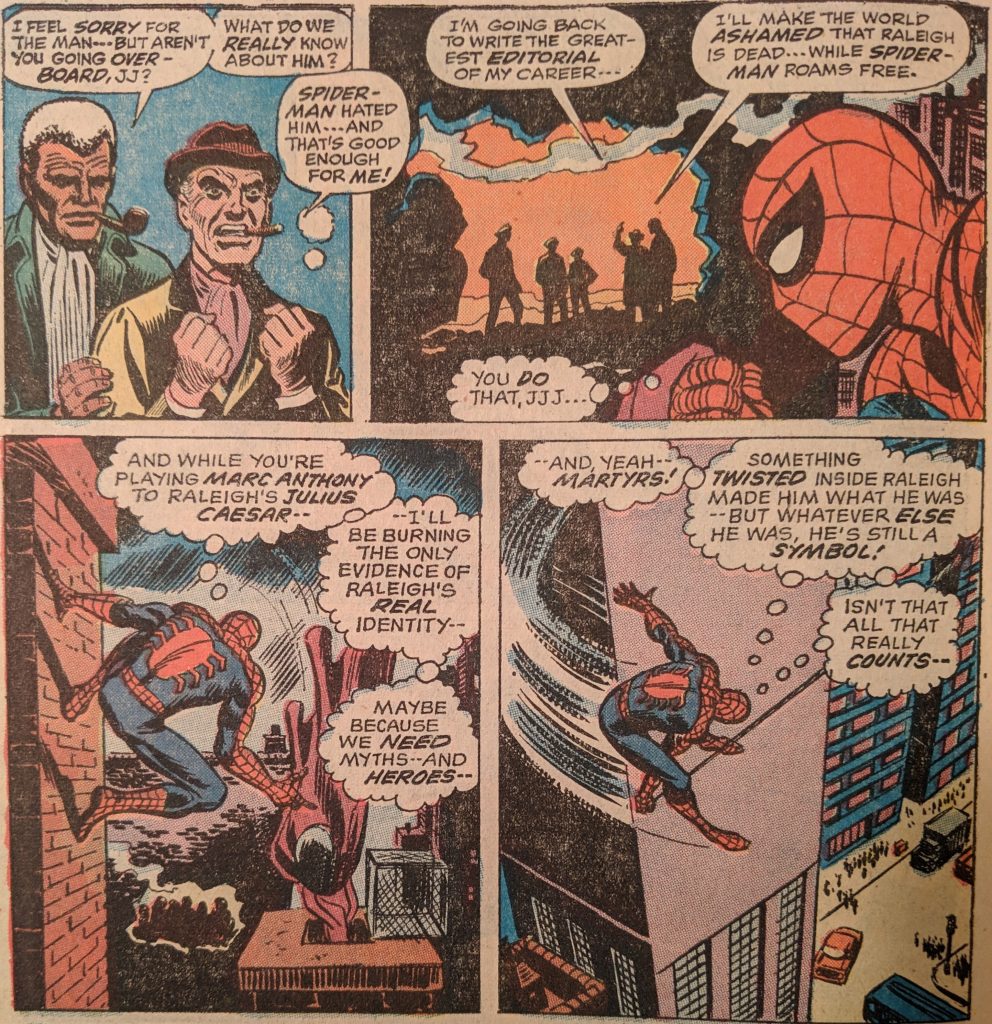
And we’re out. This story felt pretty overlong in the magazine format. Meandering. Broken up into 3 issues, it worked a little better. The original looks really nice, though. The ink wash is cool and unusual. So, you know. Pluses and minuses. And that’s where we’re leaving it for 1968 in this block. Come back next time for a jump back to Gerry Conway and Ross Andru, as they introduce their most significant contribution to the Marvel mythos.

